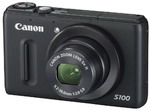Wednesday, June 2, 2004
Aspect Ratios Demystified
Posted by Jason Dunn in "ARTICLE" @ 07:00 AM
First Things First...
4x3 TV's have a 1.33:1 aspect ratio ( width/height=1.33 )
16x9 TV's have a 1.78:1 aspect ratio ( width/height=1.78 )
If you are watching programming that has a different aspect ratio than your TV, you will either end up with black bars on top & bottom (TV ratio < program ratio) or left & right (TV ratio > program ratio) or some of the picture is discarded to maximize used display area.
Most movies these days are 1.85:1 or wider. Anything shot at 1.85:1 will probably appear without any black bars on 16x9 TVs (1.85 is pretty close to 1.78:1). If a movie is shot in 2.35:1, you will still get black bars on your 16x9 TV, though those black bars will be significantly smaller than what you would see on a 4x3 TV. On a 4x3 TV, a 2.35:1 program fills just 56% of the available picture area. On a 16x9 TV 2.35:1 fills 75%.
Common aspect ratio for today's movies include 1.85:1, 2.35:1. Other aspect ratios that have been used include 1.33:1, 1.66:1, 1.96:1, 2.20:1, 2.76:1, 3.0:1. If you have a 16x9 TV and watch anything wider than 1.85:1 you will probably see black bars. If you have a 4x3 TV and watch anything wider than 1.33:1 you will see black bars.
Ok, with that out of the way...
DVD Players and Aspect Ratios
DVD players have three aspect ratio display modes: 16x9, 4x3 letterbox, and 4x3 pan & scan. These modes are ONLY used with anamorphic widescreen DVDs, and are ignored with non-anamorphic discs. An anamorphic DVD contains a picture that would appear squished horizontally if viewed unmodified on a 4x3 TV (everything would look tall). These DVDs are intended to be viewed on a widescreen (16x9) TV, and when played back in 16x9 mode are stretched horizontally by the TV to restore the intended picture width.
If you watch these DVDs in one of the 4x3 modes of your player, one of three things happens: (1) every 4th horizontal line of the picture is thrown away (leaving just 75% of the original picture), (2) 4 lines of the picture are shrunk to fill 3 lines, or (3) in pan & scan mode, the left and/or right portions of the picture are discarded to fill more of the screen. In all three cases you lose significant picture information, resulting in much less sharpness, and often causing jumpiness during vertical motion.
So, watching an anamorphic DVD on a 16x9 TV with your DVD player set to 16x9 mode will give you the best picture, because no picture information has to be thrown away to fill the screen.
That said, however, some newer and fancier 4x3 TVs (especially HDTV monitors) know how to recognize the 16x9 flag in the video signal and adjust themselves to show all picture information in a physically shorter area. They do this without throwing out any information as the DVD player does when it is set to 4x3 mode, so you end up with a much sharper picture. To take advantage of this mode, set the TV's aspect ratio to "Auto" or "16x9", the DVD player's aspect mode to 16x9, and use an S-Video or Component video cable to connect the two. The resulting picture is MUCH sharper, less jumpy, and far easier on the eyes than what you would get with both devices set to 4x3. You can very clearly see the difference in the scrolling end credits of any anamorphic DVD. If your TV has this mode, use it! You'll be glad you did.
To make the comparison, set your DVD player to each of the 3 display modes and watch an anamorphic widescreen disc's scrolling end credits. When set to one of the 4x3 modes, the text will be much less crisp, be much more jumpy, and be hard to read. In 16x9 mode, the text is very crisp, moves smoothly, and is easy to read.
But Wait...
As if all of this isn't confusing enough, some movies are actually shot in 1.33:1 and are cropped in the theater to give the wide aspect ratio. This may sound appealing for 4x3 TV owners, but the fact is that the director never intended for the upper and lower portions of the picture to be seen, so you might end up seeing things like boom mics, cables, power lines, etc. in your picture. So the general rule of thumb is to watch the movie in the aspect ratio in which it was intended to be seen.
One exception to this...several of the Disney Pixar movies ("standard" versions) are actually adjusted for display on a 4x3 television and include MORE picture than their 16x9 counterparts. If you have a 4x3 TV and watch these movies, select the "standard" version instead of the widescreen. If you have a 16x9 TV, use the widescreen version.












